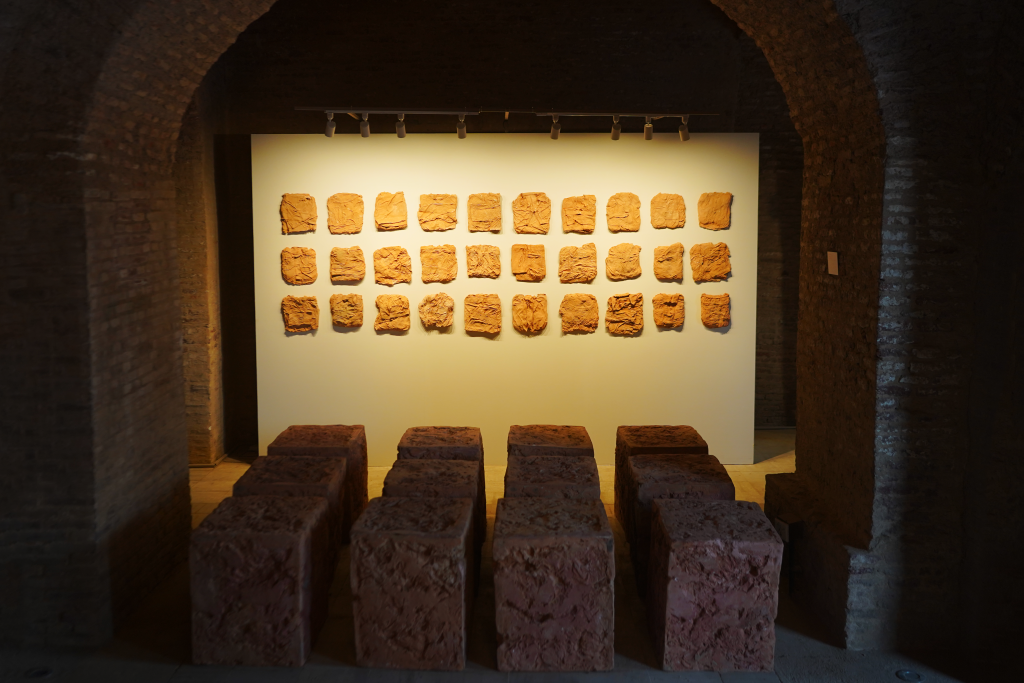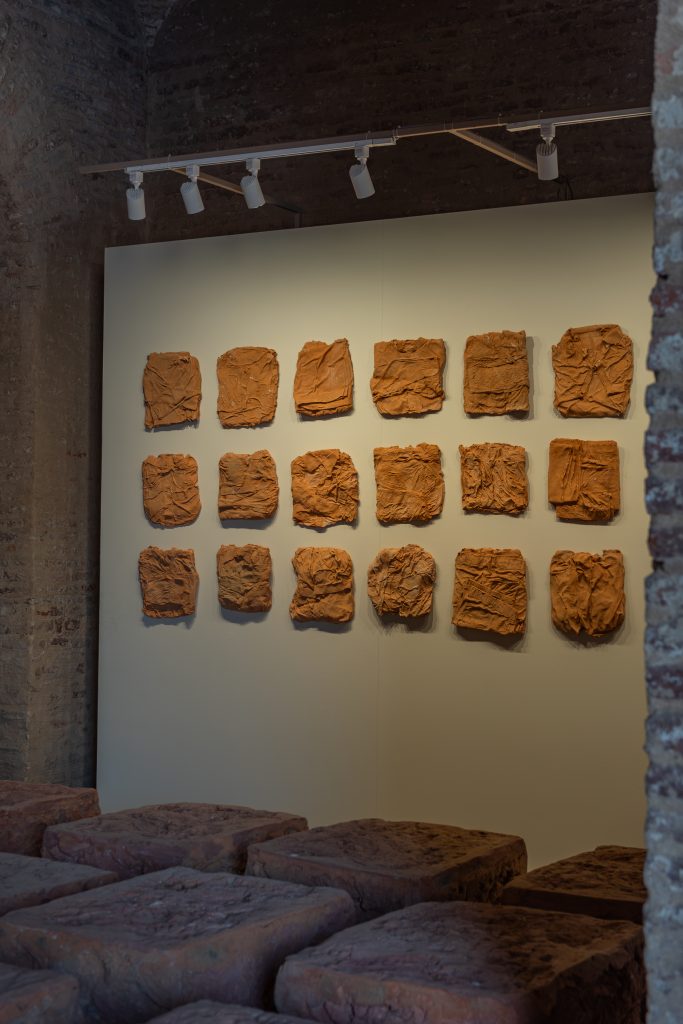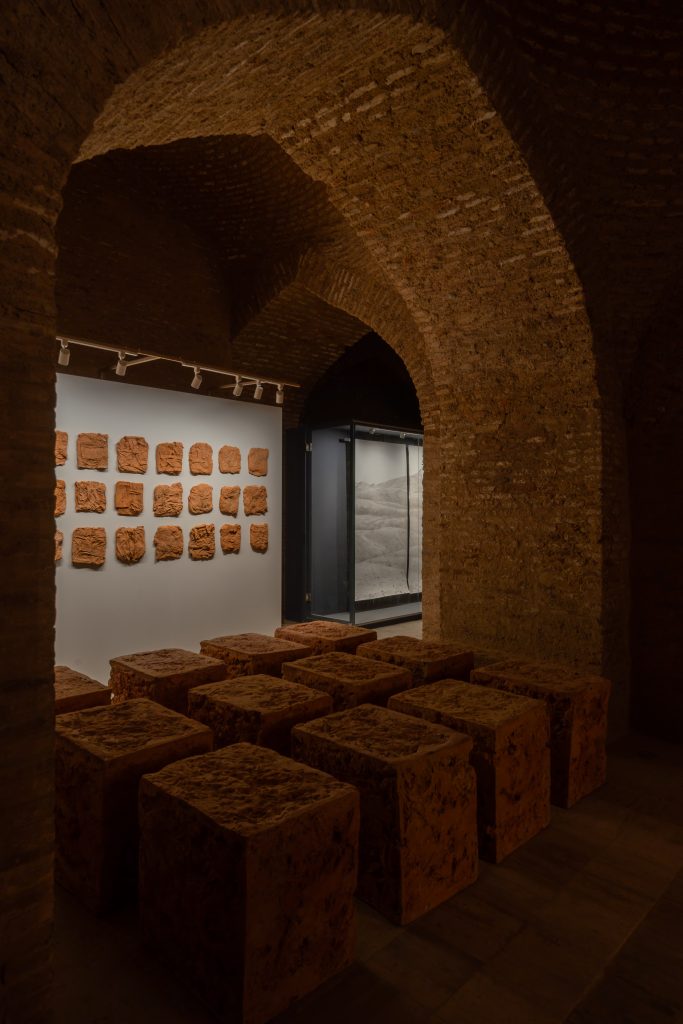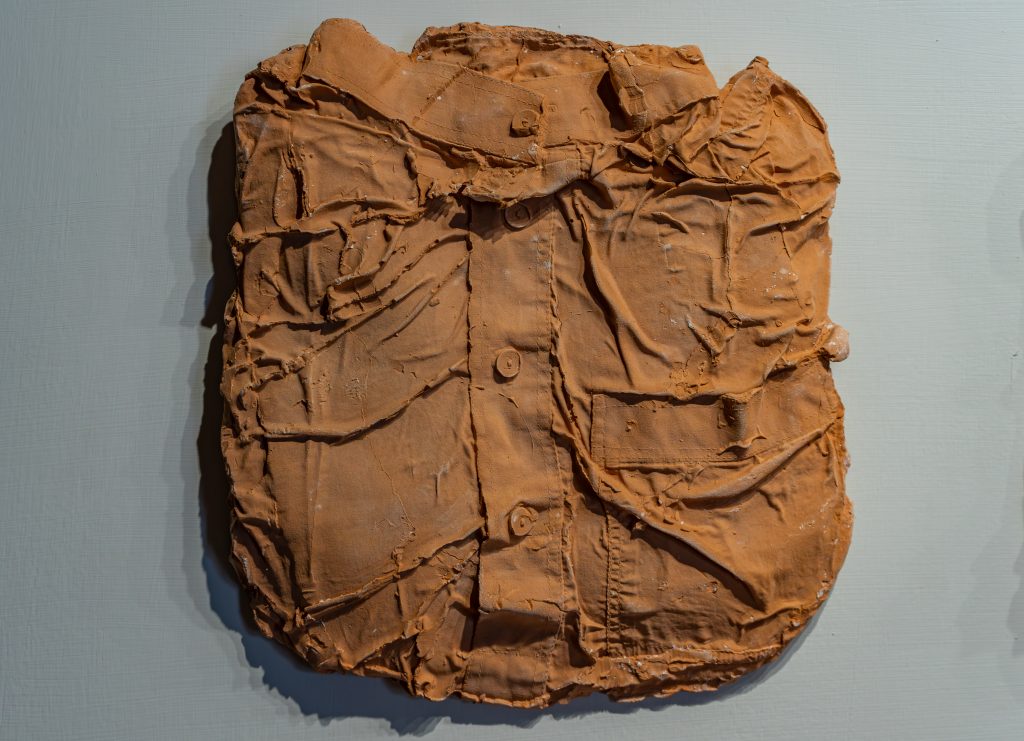Birender Yadav
Caste Brick, 2024
Birender Kumar Yadav (b. 1992) was born to a migrant worker family in Ballia, Uttar Pradesh, and lives and works in New Delhi. He received his BA from Banaras Hindu University and his MFA from College of Arts, Delhi University. He frequently engages the experiences laboring castes and class around him, documenting their exploitation and oppression. Yadav’s work has been shown in exhibitions such as the Berlin Biennale (2022) and the Indian Ceramics Triennale (2024). This is Yadav’s first project in Pakistan.
Caste Brick grows out of Birender Yadav’s work with brick kiln workers and their families, an often exploited community on the Subcontinent. In spending time with the workers in the brickmaking industry in Mirzapur, Eastern Uttar Pradesh, the artist learned about a complex socio-economic system that brought together marginalized groups of landless bonded laborers from different religious and ethnic backgrounds specialize in different tasks of production. Attempting to monumentalize this vernacular aesthetic while bringing back to mind the “sweat of labor,” Caste Brick stands as a contrast of its two parts. The larger part consists of a dozen large-size terracotta blocks molded from brick makers’ clothes, arranged in a grid. Crushed together during the casting process, the clothes become so much undifferentiated stuff, much like how the workers themselves are treated. Meanwhile, meeting the viewer at eye-level are thirty molds of individual pieces of clothing, which suggest, however, subtly, the intact personhood of each of their former owners. Caste Brick thus juxtaposes the socio-economic and environmental impact of brick-making, while underscoring the cross-border ties between India and Pakistan.
کاسٹ برک، 2024
2024 میں لاہور بینالے فاؤنڈیشن کے ایماء پر۔
بِریندر یادو
بِریندر کمار یادو (پیدائش 1992) کا تعلق اتر پردیش کے ضلع بلیا میں ایک مہاجر مزدور خاندان سے ہے۔ وہ نئی دہلی میں رہتے اور کام کرتے ہیں۔ انہوں نے بنارس ہندو یونیورسٹی سے بی اے اور دہلی یونیورسٹی کے کالج آف آرٹس سے ایم ایف اے کی ڈگری حاصل کی۔ یادو اپنے اردگرد کی محنت کش ذاتوں اور طبقات کے تجربات کو فن کے ذریعے پیش کرتے ہیں اور ان کے استحصال اور جبر کی داستانیں بیان کرتے ہیں۔ یادو کے کام کو متعدد نمائشوں میں پیش کیا جا چکا ہے، جن میں برلن بینالے (2022) اور انڈین سیرامکس ٹرینالے (2024) شامل ہیں۔ پاکستان میں یہ یادو کا پہلا پراجیکٹ ہے۔
‘کاسٹ برک’ بِریندر یادو کا وہ کام ہے جو انہوں نے بھٹہ مزدوروں اور ان کے خاندانوں کے ساتھ کیا، یہ ایک ایسا طبقہ ہے جو جنوبی ایشیا میں اکثر استحصال کا شکار ہوتا ہے۔ مشرقی اتر پردیش کے علاقے میرزا پور میں، بھٹوں میں کام کرنے والے مزدوروں کے ساتھ وقت گزارتے ہوئے، یادو نے ایک پیچیدہ سماجی و معاشی نظام کو سمجھا جو مختلف مذہبی اور نسلی پس منظر سے تعلق رکھنے والے بے زمین مزدوروں کو یکجا کرتا ہے، جو پیداواری عمل کے مختلف مراحل میں ماہر ہوتے ہیں۔ مقامی جمالیات کو ایک عظیم تخلیق میں ڈھالنے اور مزدور کی محنت و مشقت کو ذہن میں رکھتے ہوئے، ‘کاسٹ برک’ اپنے دو حصوں کے درمیان ایک نمایاں تضاد پیش کرتا ہے ۔ اس کا بڑا حصہ بارہ بڑے سائز کے مٹی کے بلاکس پر مشتمل ہے، جو اینٹ بنانے والے مزدوروں کے کپڑوں کے سانچے سے ڈھالے گئے ہیں، اور ایک مخصوص ترتیب میں رکھے گئے ہیں۔ کاسٹنگ کے عمل کے دوران، یہ کپڑے اس قدر دب جاتے ہیں کہ اپنی شناخت کھو دیتے ہیں، جیسے کہ خود مزدور۔ دوسری جانب، دیکھنے والے کی نظر کے سامنے، تیس سانچے موجود ہیں جو انفرادی کپڑوں کے ہیں، جو نہایت خاموشی سے اس بات کی نشاندہی کرتے ہیں کہ ان کے مالک ایک منفرد شناخت رکھتے ہیں۔ ‘کاسٹ برک’ اینٹ سازی کے سماجی و معاشی اور ماحولیاتی اثرات کو سامنے لاتے ہوئے، بھارت اور پاکستان کے درمیان سرحد پار تعلقات کو بھی اجاگر کرتا ہے۔
Commissioned in 2024 by the Lahore Biennale Foundation





